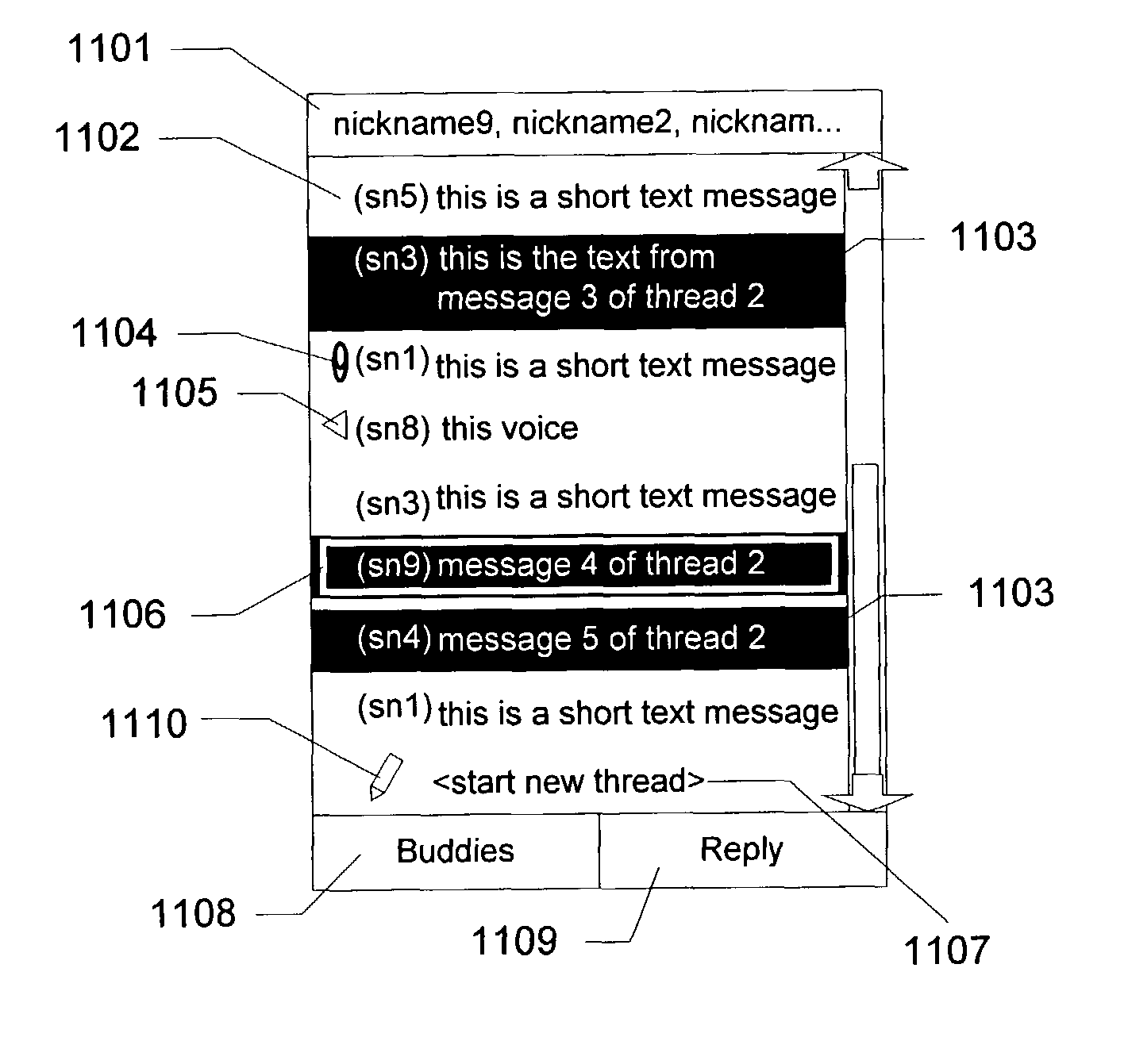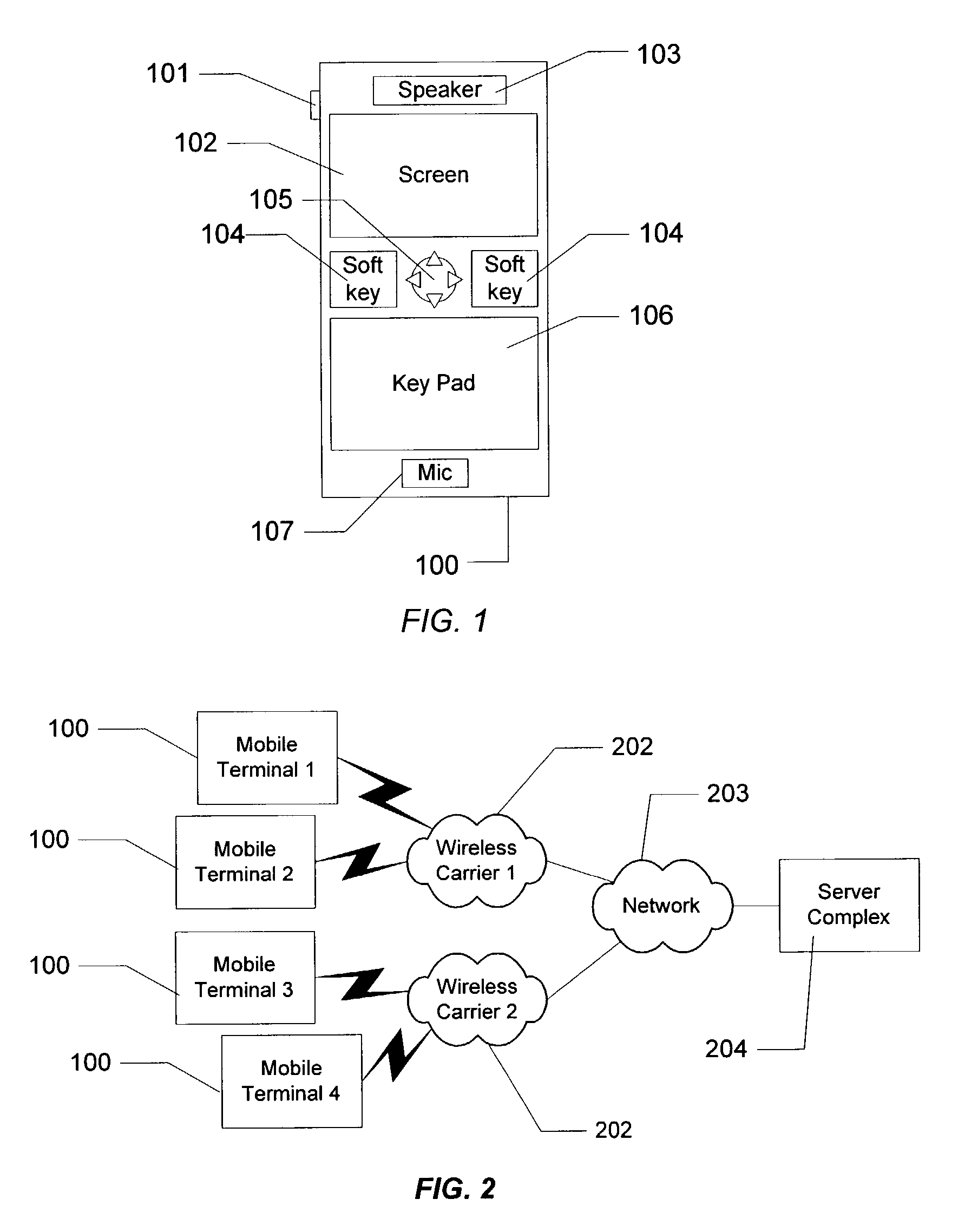Voice and text group chat display management techniques for wireless mobile terminals
a wireless mobile terminal and voice and text group technology, applied in the field of communication systems, can solve the problems of unwieldy interfaces, too large display of combined information of all chat history entries, etc., and achieve the effect of high likelihood of name collision and suitable wireless devices
- Summary
- Abstract
- Description
- Claims
- Application Information
AI Technical Summary
Benefits of technology
Problems solved by technology
Method used
Image
Examples
Embodiment Construction
[0023]The present invention may be more fully described with reference to FIGS. 1-14. FIG. 1 illustrates a wireless mobile terminal 100 that may comprise any wireless communication device such as a handheld cellular phone or a wirelessly enabled Personal Digital Assistant (PDA). The configuration of the mobile terminal 100 shown in FIG. 1 is exemplary only, and it is generally understood that a variety of terminals and terminal configurations could be used. As shown, the mobile terminal 100 comprises a speaker 103 for rendering signals, such as received speech, audible; a display 102 to render text and graphical elements visible; a navigation rocker 105 that allows a user to navigate a list or menu displayed on the screen; programmable buttons (or “softkeys”) 104; a keypad 106 that allows the user to input digits, letters, and other symbols (e.g., punctuation); a microphone 107 that captures audio such as the user's speech; and a push-to-talk button 101 that allows the user to initi...
PUM
 Login to View More
Login to View More Abstract
Description
Claims
Application Information
 Login to View More
Login to View More - R&D
- Intellectual Property
- Life Sciences
- Materials
- Tech Scout
- Unparalleled Data Quality
- Higher Quality Content
- 60% Fewer Hallucinations
Browse by: Latest US Patents, China's latest patents, Technical Efficacy Thesaurus, Application Domain, Technology Topic, Popular Technical Reports.
© 2025 PatSnap. All rights reserved.Legal|Privacy policy|Modern Slavery Act Transparency Statement|Sitemap|About US| Contact US: help@patsnap.com



